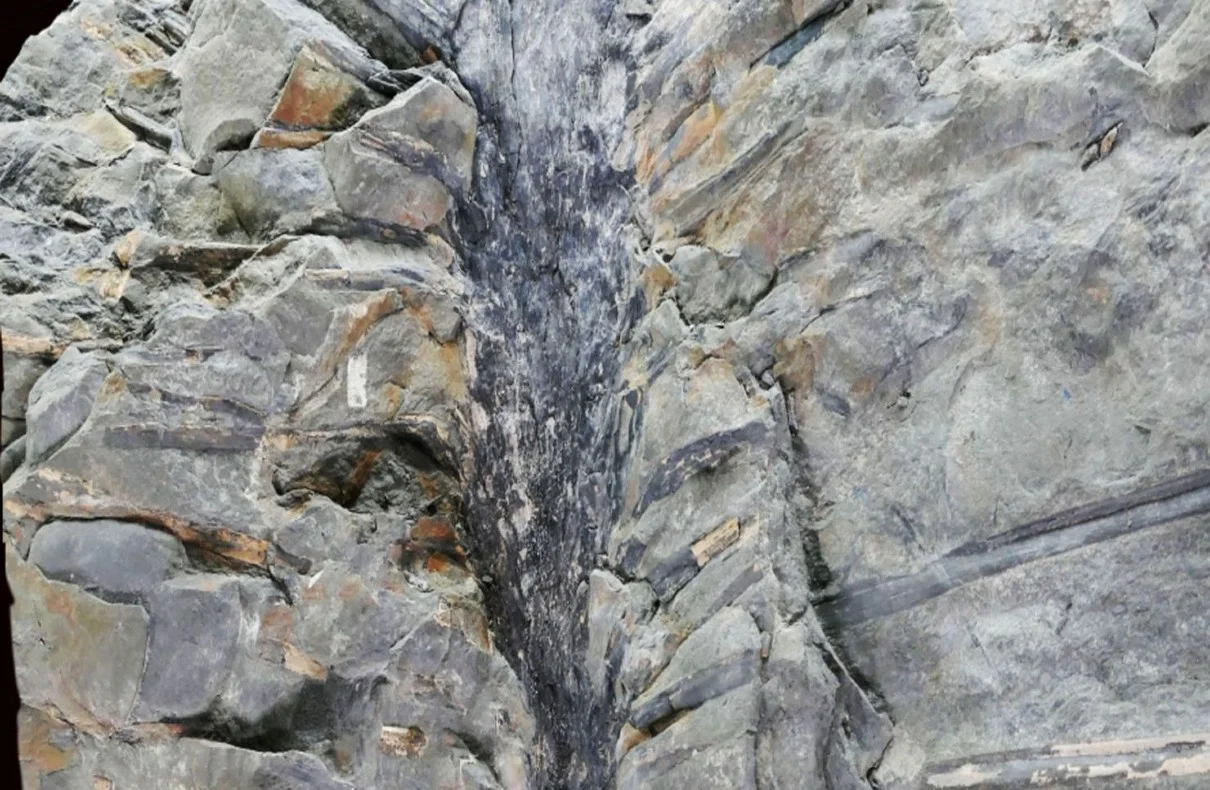
The discovery of rare ancient tree leaves in Canada has left scientists “gobsmacked”. These well-preserved plant fossils, found in southeastern Canada, are unlike anything researchers have ever seen before. The fossils provide valuable insights into the evolution and growth of trees during the Carboniferous period.
The story begins with an earthquake that occurred 350 million years ago, toppling the trees and burying them in a mud bath. The trunks and leaves of these trees were perfectly preserved in the sediments at the bottom of a lake. Geologists stumbled upon the first fossilized tree while excavating a quarry in New Brunswick in 2017. Since then, four more near-identical specimens have been unearthed.
The researchers were amazed by the architecture of these ancient trees. Unlike modern trees, these trees had a dense canopy of more than 250 leaves packed around the top of a spindly, unbranched tree trunk. The leaves grew up to 9.8 feet long and extended out from the trunk in tightly compressed spirals. This unique spiral layout allowed the leaves to maximize sunlight capture for photosynthesis.
The discovery of these fossilized trees suggests that they may represent an example of evolutionary experimentation. The shorter stature of these trees indicates that they were the earliest examples of smaller trees growing beneath the canopy of taller trees. This finding challenges our previous understanding of how trees are organized and grow.
Oldest Fossilized Skin Found! You Won’t Believe How Old It Is
The reconstruction of these ancient trees has provided researchers with a distorted sense of how trees evolved during the Carboniferous period. While the growth architecture of these trees is similar to some modern tree models found in today’s tropics, there are distinct differences. Modern tree ferns, gymnosperms, and flowering plants carry fewer leaves in their crowns compared to these ancient trees.
The researchers believe that these ancient trees, known as Sanfordiacaulis, stood out among the vegetation during the Carboniferous period. Just as quiver trees and baobabs capture attention today, these unique trees would have been remarkable sights in their time. The discovery of these fossils sheds light on the diversification of plants during the Devonian and Carboniferous periods.
The study of these ancient trees suggests that the plant kingdom underwent various experimental forms during deep time. While some of these experimental forms were successful for millions of years, others did not survive the test of time. The fossils of Sanfordiacaulis represent one such evolutionary experiment that eventually failed. By studying these fossils, scientists can gain valuable insights into the evolutionary history of plants.
